Weighing Up The Essential Triad For Effective Conversions: UX, SEO & CRO
As you create a presence for your business online, the marketing strategies that you adopt must be fine-tuned to help you achieve your goal of facilitating conversions. SEO is imperative in generating interest in your products or services, but factors like search compliance and content accessibility have to be considered too in order to really make a name for yourself online.
SEO has become an all-encompassing force in digital marketing. However, plenty of businesses fail to acknowledge that Search Engine Optimisation isn’t the be-all and end-all of building an online presence, and companies can often be left wondering why their efforts are failing to generate traffic or create the conversions they anticipated.
The best online marketing strategies are multifaceted and committed to the triad of effective conversions. Search Engine Optimisation (SEO), combines with User Experience (UX), and Conversion Rate Optimisation (CRO) to develop a comprehensive strategy that’s primed for leveraging sales.
SEO-driven content may justifiably be the most effective way of generating exposure for businesses, it will only ever lead traffic towards the direction of your front door. UX helps them to cross the threshold while CRO helps them to decide to make a purchase.
To build online conversions, it’s vital to find a balance within your SEO, UX, and CRO strategies and fine-tune them towards creating a marketing ecosystem in that each approach compliments each other. Let’s take a deeper look at the triad of effective conversions and delve into the data that quantifies the value that can be found in SEO, UX, and CRO marketing.
Building on SEO Foundations
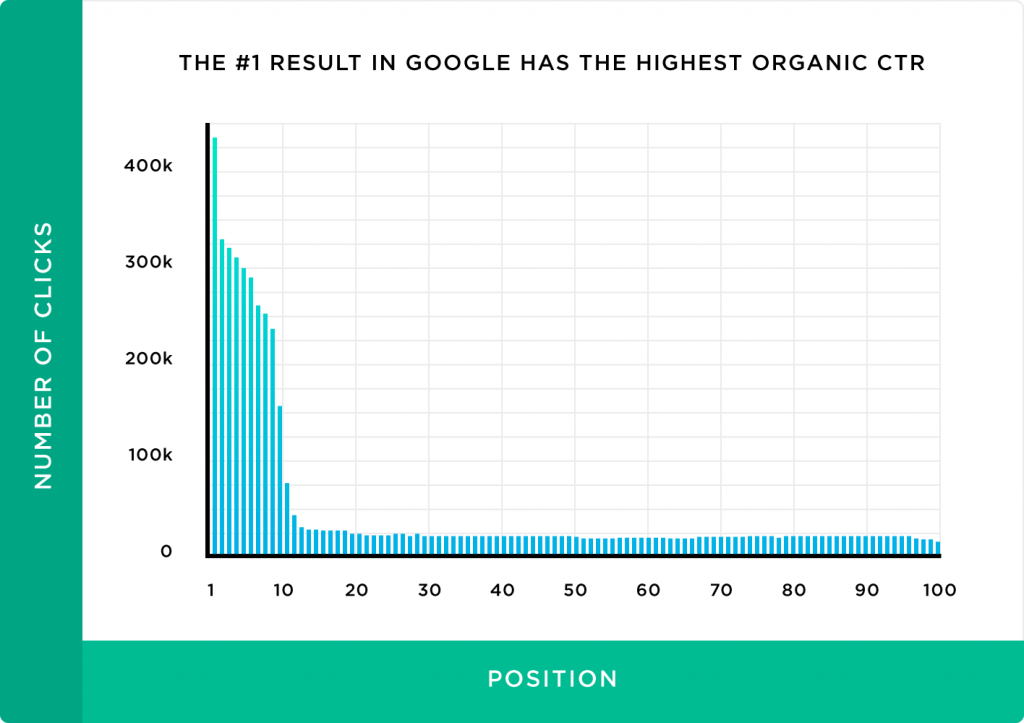
Search Engine Optimisation is the name given a collection of approaches that are designed to aid websites in becoming more visible to audiences using search engines like Google. As the chart above shows, businesses that position themselves in the first place among Google’s results attracts, on average, over 400,000 clicks, as opposed to websites positioned outside of the top 10, which can struggle to muster a fraction of this figure.
Search engines send out crawlers to help to explore your website and better understand its content. This means that it’s important for you to make it as easy as possible for these little helper bots to communicate back to the likes of Google the topics that you’re attempting to cover within your pages.
Vitally when it comes to SEO, crawlers can explore the quality and quantity of the links you build and the types of keywords that you use within your content before deciding where to place your content within the results pages of search engines.
Naturally, Google is the most popular and powerful search engine operating today. With this in mind, let’s focus primarily on how SEO helps websites to gain prominence within Google’s SERPs. Google’s job is to offer accurate results for every query that’s submitted to the engine. To supply users with accurate results, Google instantaneously studied the query being made and then read the pages of a website in order to deliver the most fitting results. Content accuracy and domain authority come into the mix here to deliver added relevance.
By determining the type of query that’s being submitted, and whether it’s informational, navigational, or transactional, Google can display results based on the relevance of the content.
What are Transactional Queries?
Transactional queries can indicate the intention of a user to complete a transaction (make a purchase).
For instance, if a user enters ‘buy Bluetooth speakers’, Google’s results will be populated with ‘transactional’ results (shops that sell smart speakers).
Despite the fact that many of the websites shown on the results pages will have fewer links pointing to them than, say, a more information-based piece such as “The 15 Best Bluetooth Speakers for Under £50,” transaction-based results will typically appear higher within search results.
What are Informational Queries?
When a user is looking for information and/or specific answers, these queries are categorised by Google as ‘informational.’
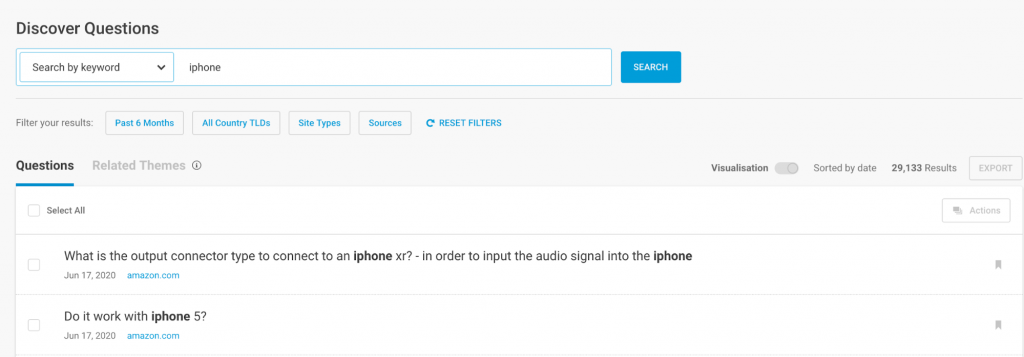
Unlike transactional queries, informational queries are typically more content-heavy pieces.
The example above illustrates the type of informational queries that Google receives in relation to iPhone questions.
What are Navigational Queries?
Navigational queries are heavily brand-based. In these instances, users type in a brand name (e.g. “eBay”) with the sole aim of visiting eBay’s website.

Besides the type of search query, there’s an innumerable amount of different factors that Google weighs up when considering its list of results. This is to an extent where SEO is extremely difficult to master even for the more experienced practitioners out there. An SEO’s job involves identifying relevant keywords and phrases to craft quality content that generates traffic.
The real challenge for SEOs, however, is to identify and create content that’s capable of driving traffic and ultimately conversions.
This is where some of BuzzSumo’s core features come into play:
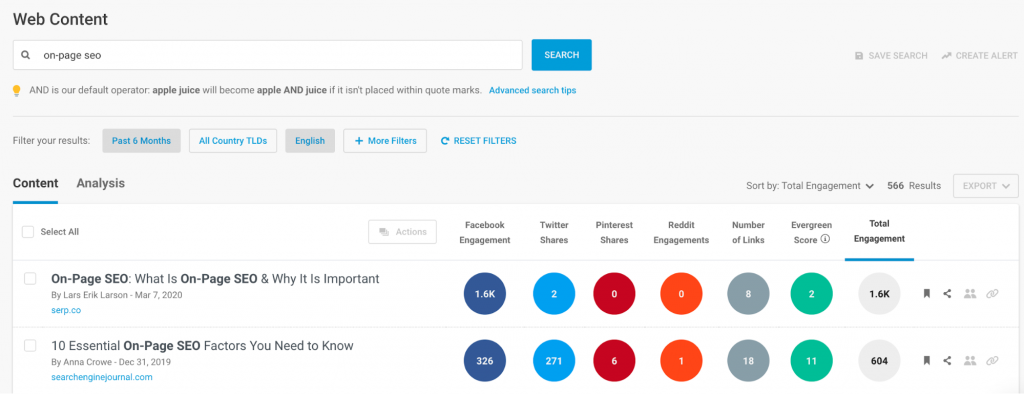
BuzzSumo’s Content Analyser helps users to identify and research the best performing content for specific keyphrases.
The analysis tab offers up further metrics such as engagement by network or engagement by content length.
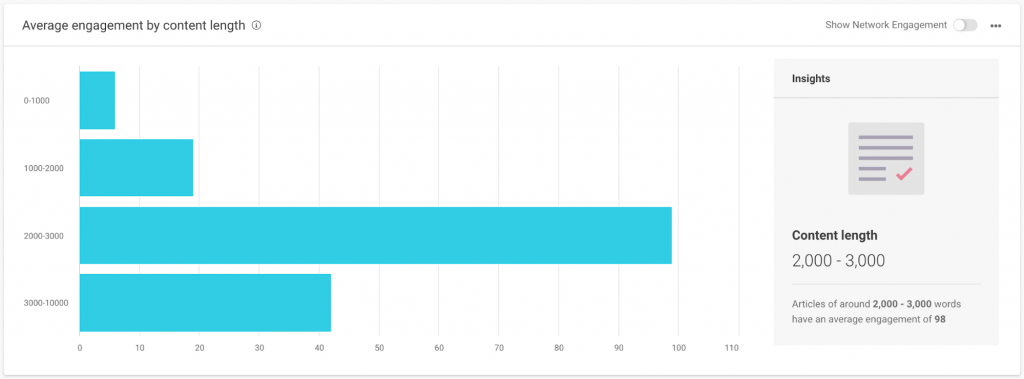
The Keyword Discovery feature allows users to dip into the ins and outs of specific keywords.
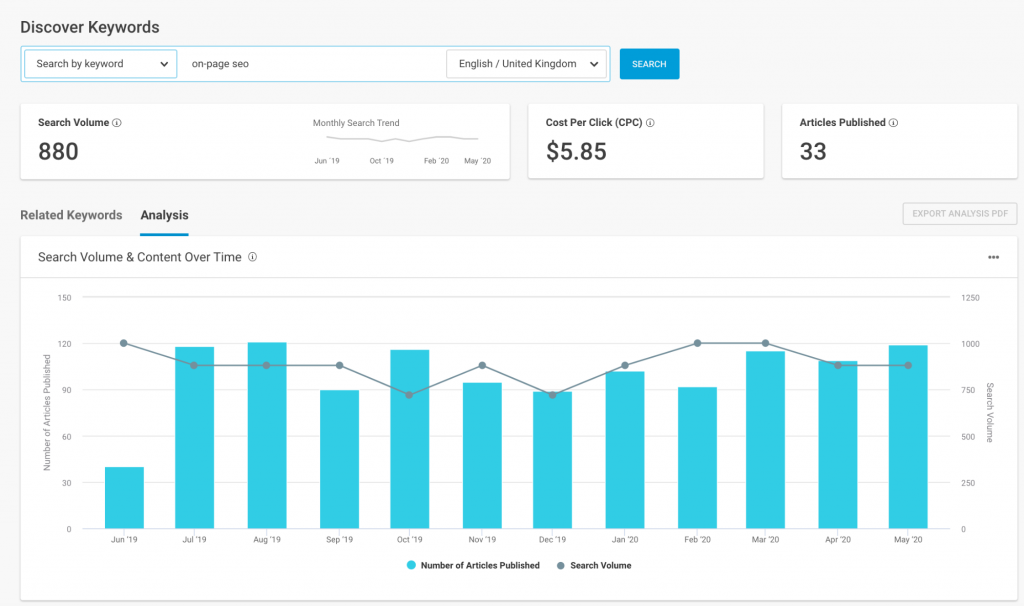
In terms of digital marketing, SEO provides businesses with the volumes of traffic that they need to successfully operate online. If audiences can’t find your website online, it’s going to be extremely hard to make conversions happen.

According to findings from BrightEdge, over half of all visitors navigate onto websites via organic search queries. These figures dwarf the expensive roles that PPC, advertising and social media campaigns can play in generating interest. This shows just how essential it is for businesses to invest time in SEO campaigns. The chart above illustrates that even in varying industries, organic search traffic consistently outperforms all other means of generating traffic.
Evaluating The Power of UX

The true value of gaining a strong UX model for a website is illustrated within the chart above. Conversion rates tend to form a strong correlation with page load times – this means that the slower a website is, it’s likely to see fewer conversions.
Free website performance analysis tools like Pingdom and Finteza can offer users a valuable “waterfall” inspection of various assets that may be slowing down their websites.
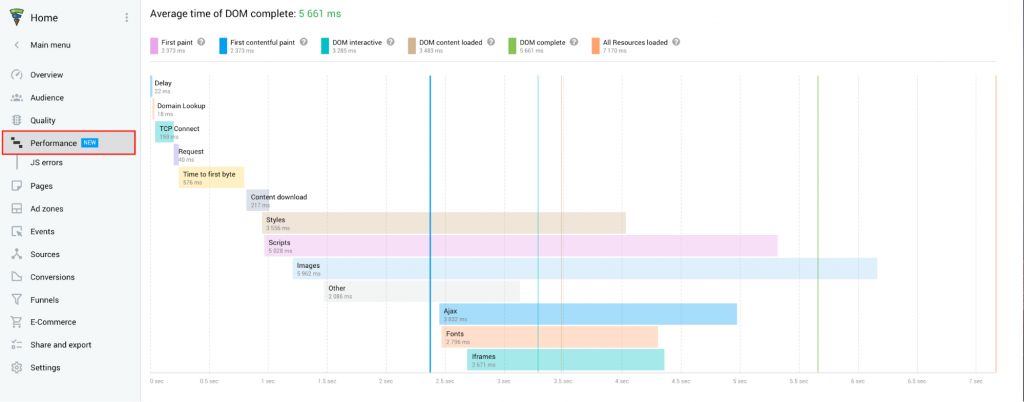
Another feature which is relatively unique is a map of a given website’s loading time in all other countries globally without the need of analysing each one individually. This can be useful when a user’s website attracts visitors from various countries across the world.
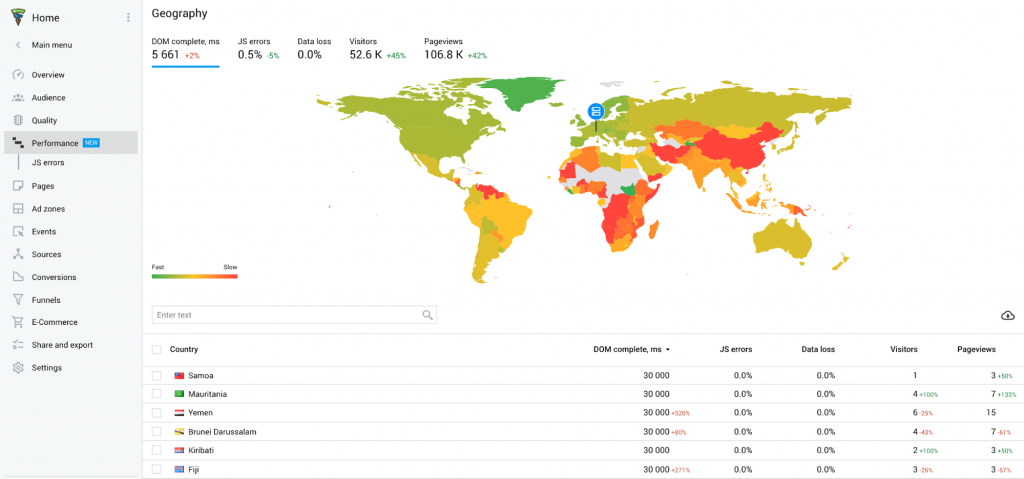
SEO has the power to lead users to a website, but it’s a site’s UX model that can help to mould their interest to an extent where making a purchase or signing up to a newsletter, or making a service enquiry becomes achievable.
Building a website that’s unappealing to target audiences and offers little in the way of the usability will lead to more visitors navigating away than making a purchase. Poor on-site experiences can even go as far as developing a negative brand perception among some prospective customers due to the levels of inconvenience suffered as a result.
Operating with a positive UX strategy means designing a usable interface that works just how visitors would expect. Interactions with pages would be convenient, informative, and wholly unintrusive. One of the more effective ways of building a strong UX involves creating a site so that users won’t need to exert any effort in navigating as they continue their journey towards a conversion.
To design a website efficiently with UX in mind, it’s vital to consider all visitors as customers who are simply waiting to make a purchase. This means that the messages, displays and plugins on-site all need to complement its branding and subtly lure traffic towards on-site sales funnels. Valuable user experiences will always ensure that visitors will continue to return to a website, and this enables continuous engagement long into the future.
Weighing up the Influence of CRO

The final piece of the essential triad focuses on Conversion Rate Optimisation. As the table above shows, there are plenty of similarities to be found between CRO practices and that of both SEO and UX.
In a nutshell, CRO relates to the act of optimising your SEO and UX with the intention of optimising conversions.
CRO can involve many different factors, such as fine-tuned Call-to-Action landing pages, multivariate A/B testing to see which approach leads to more sales, optimising content strategies, and utilising visual assets more effectively within a sales funnel.

Some marketers may mistakenly believe that CRO consists primarily of quick fixes designed to leverage sales. But there are some small changes in the realm of CRO that can ultimately amount to significant differences in respective sales funnel performance among websites. However, it’s worth noting that many of these changes could require heavy investigation before it’s worth taking decisive action.
On the whole, CRO needs plenty of analysis and research to work comprehensively. It’s difficult to optimise on-site appeal if a user isn’t aware of what cues best help customers to gain the confidence to make a purchase.
Marketers may see SEO and CRO as largely interchangeable when it comes to leveraging conversions. While SEO and CRO do share some similarities, SEO is wholly intent on bringing traffic to your site, while CRO converts said traffic into sales.
Through various CRO techniques, it’s possible to add much more value to each visitor that’s attracted to your site through SEO strategies. Instead of recording each arrival as a click-through, they could be identified as genuine prospective customers by utilising the right combination of UX and CRO approaches.
CRO may also aid businesses in staying one step ahead of their more SEO-based industry rivals. With the right level of marketing, the quality of traffic that it’s possible to gain may heavily outweigh the number of competitor visitors.
Triads Based on Research
The best SEO, UX, and CRO triads are based on the foundations of research and acquired knowledge. There isn’t much point in running A/B tests on pages or choosing to rank for specific keywords when you haven’t yet realised who your audience really are.
The best marketing approaches require measured actions to be taken regarding branding, CTAs, and website responsiveness. If you are unable to effectively map out your visitors’ paths from discovering your site to making a purchase, then you haven’t conducted the right amount of prior research.
Be sure to optimise your processes by gathering relevant information from different sources, whether they’re from technical audits, user behaviour analysis, data analytics, or multivariate testing. It can be vital to come up with a measurement plan to effectively act on your insights.
As a marketer, your aim should be to create the best website possible that’s clearly visible through effective content. When users arrive on your pages, it’s then the job of your CRO approach to ensure that they navigate towards a conversion rather than bounce back.
Peddling Conversions
Unfortunately, in the dynamic world of marketing, there’s no simple solution when it comes to driving conversions towards your website. SEO, UX & CRO can piece together an effective triad to build towards conversions but their application is ultimately down to the type of business that a website is aiming to attract.
Strategies may vary depending on whether your website is primarily operating to attract sales, software downloads, clients, or mailing list recipients. Make sure you continually lookout for your visitors’ needs and refrain from making assumptions over what they would like to see and read from your business.
Successfully utilising your triad can help to forge a steady stream of sales that can be relied upon long into the future. You may need to constantly review and critique your approaches to get the best out of your triad, but if your website is fundamentally made more visible through an effective SEO approach, your UX and CRO can ensure that conversions will continue to flow over time.
Photo by Austin Distel on Unsplash
